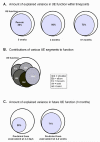Assessment of upper extremity impairment, function, and activity after stroke: foundations for clinical decision making
- PMID: 22975740
- PMCID: PMC3524381
- DOI: 10.1016/j.jht.2012.06.005
Assessment of upper extremity impairment, function, and activity after stroke: foundations for clinical decision making
Abstract
The purpose of this review is to provide a comprehensive approach for assessing the upper extremity (UE) after stroke. First, common UE impairments and how to assess them are briefly discussed. Although multiple UE impairments are typically present after stroke, the severity of one's impairment, paresis, is the primary determinant of UE functional loss. Second, UE function is operationally defined and a number of clinical measures are discussed. It is important to consider how impairment and loss of function affect UE activity outside of the clinical environment. Thus, this review also identifies accelerometry as an objective method for assessing UE activity in daily life. Finally, the role that each of these levels of assessment should play in clinical decision making is discussed to optimize the provision of stroke rehabilitation services.
Copyright © 2013 Hanley & Belfus. Published by Elsevier Inc. All rights reserved.
Figures


References
-
- Potter K, Fulk GD, Salem Y, Sullivan J. Outcome measures in neurological physical therapy practice: Part i. Making sound decisions. J Neurol Phys Ther. 2011;35:57–64. - PubMed
-
- Jette DU, Halbert J, Iverson C, Miceli E, Shah P. Use of standardized outcome measures in physical therapist practice: Perceptions and applications. Phys Ther. 2009;89:125–135. - PubMed
Publication types
MeSH terms
Grants and funding
LinkOut - more resources
Full Text Sources
Other Literature Sources
Medical

